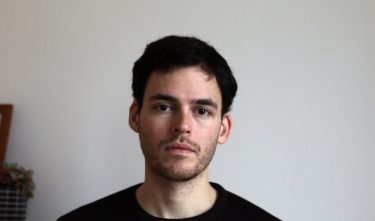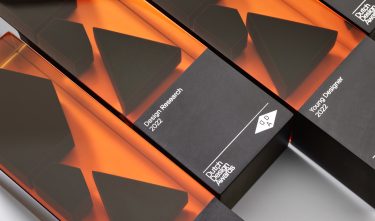Living the Dream
— Nick Axel is Deputy Editor of e-flux Architecture and Head of the Architectural Design department at the Gerrit Rietveld Academie. From 2020–2022, he was Curator of Architecture and Chair of the Architectural Advisory Board at the Babyn Yar Holocaust Memorial Center.

There are plenty of good ideas in the nominees for the 2022 Dutch Design Awards. There are plenty of beautiful things, too. But there is also more than that, and crucially so. There is also sincerity. There is engagement. There is praxis. Because while rhetorical conjecture, political positioning, and wishful thinking are all important, the challenges society faces today requires designers and citizens alike to bridge the gap between theory and practice. The future, in a number of nominees for the 2022 Dutch Design Awards, is not something that exists out there, forever just over the horizon. Though we might not always know how to recognize it, or how to work with it, these designers show us that the future is already here. It surrounds us. And design is the way of bringing it out into the open, actualizing its potential.
Sometimes, the most important step towards any future is understanding where we actually are; what it means to be in the “present.” The world we live in has been, and continues to be unjust. The status quo upholds the silence of countless historically underrepresented, disenfranchised, and oppressed groups. This is why the most important and meaningful thing can be to simply give people a voice; to show the realities that others call daily life. The power of this is clearly visible in the work WTFFF!? by Morrow, who were commissioned by Slachtofferhulp (Victim Support Fund) to create a platform where young people can discover and share stories of online sexual abuse. With its captivating visual design, WTFFF!? allows people who have been subject to such violent acts to be heard, and possibly even to overcome common post-traumatic feelings such as fear, guilt, shame, and loneliness. While dealing with very different issues, the project Exposing NYPD Surveillance with Amnesty International by Superposition provides similar degrees of transparency onto the contemporary spatial politics of New York City. By mapping the spread of facial recognition technology and its intersection with other oppressive forms of policing, it allows us to imagine a better, just, and inclusive future.

Just because we can identify a problem doesn’t mean that we know the solution, or even that there is one. This is particularly evident in the case of providing housing and care to people with a severe mental or multiple disabilities. Sometimes what is most needed is not a solution at all, but a process that allows us to understand the problem better. This is exactly what Sjaak Langenberg and Rosé De Beer sought to do in Kleinkijkacademie, which reinvented everyday tasks and household activities for the care organization Severinus. Methods such as turning window washing into an interactive game that can be done together with residents, for instance, provided supervisors with new insights, and have been incorporated into the organization’s vocational training. This systemic approach to contemporary issues is evident in two other projects as well: REX by STUDIO INEKEHANS, and Human Material Loop by Studio Zsofia Kollar. In collaboration with Circuform, REX reimagines the studio’s 2011 furniture design for a circular economy. The chairs are not only made out of 100% recycled plastic, but thanks to a twenty-euro “deposit” included in the purchase price, the chairs will themselves be recycled. Similarly, Human Material Loop sees human hair that usually goes to waste after a haircut as a valuable biomaterial. Beyond pioneering novel weaving methods, Studio Zsofia Kollar established a network of hairdressers across Amsterdam that donate their cut hair. With this infrastructure in place, the only limit is the imagination and ingenuity of textile designers, and the norms of the textile and fashion industries.
— The nominees for the 2022 Dutch Design Awards show a wide range of skills, approaches, techniques, materials, and aesthetics.
It is rare to have the opportunity to completely change the way something works. The status quo is not there for a reason, but it does give rise to its own justification. It is heavy, and has a great deal of inertia. That is why instances of radical imagination need to be recognized and celebrated. In the agricultural landscape of the Wieringermeer polder, HOSPER (with Pé Okx and Cor Ten Haaf) designed VisKringloop Wieringermeer, a spawning and breeding ground for fish. Not only do innovative methods connect the site to the Amstelmeer Canal—where fish come from and return to—but the site’s striking geometric design invites humans in to understand and appreciate the ecological processes taking place. And in Rotterdam, for the Museum Boijmans Van Beuningen, MVRDV designed the world’s first public art depot to not only house, but reveal the museum’s collection; a point of pride, but so much of which never comes out of storage. The Depot Boijmans Van Beuningen fundamentally transforms the relationship between the museum and its audience, giving access to so much of what would otherwise be completely inaccessible. It also changes the nature of curating, bringing the two meanings of the term—loosely, “to care for” and “to make exhibitions”—closer together than ever before and into creative dialogue. With an elegant, iconic form, the Depot is not just a new symbol of Rotterdam, but a beacon to the rest of the world showing what the future of museums looks like.
The nominees for the 2022 Dutch Design Awards show a wide range of skills, approaches, techniques, materials, and aesthetics. They all are indicative of the courage, dedication, and ingenuity required to make the world a better, more livable place. The Dutch have a long history of pragmatism and bravery in the face of an uncertain future. Let us hope that Dutch Design will continue to chart the way forward, fashioning the vessels and providing the light that allow us to see and reach where we want to go. Let’s not just keep it real. Let’s keep on making it real.